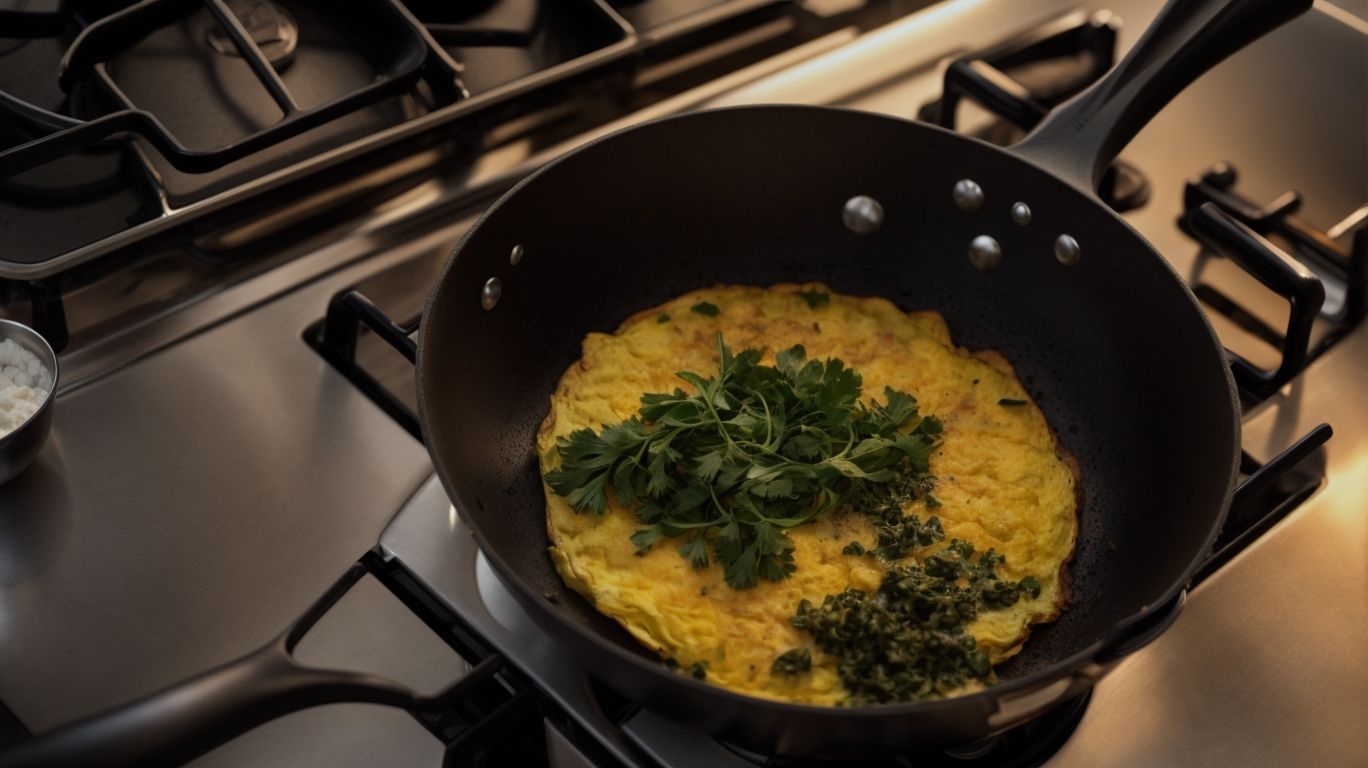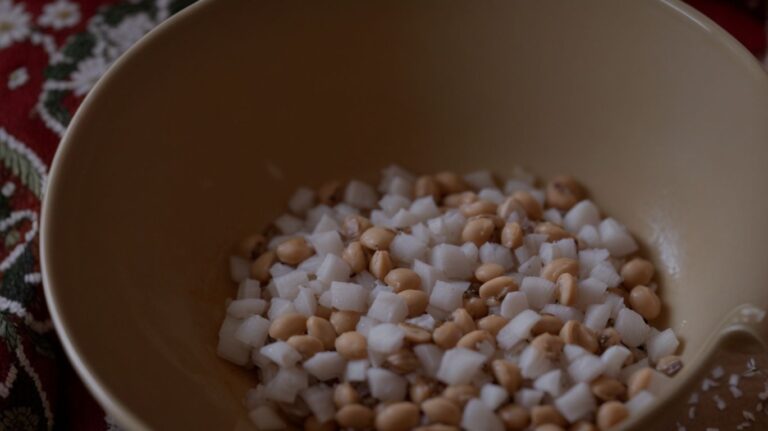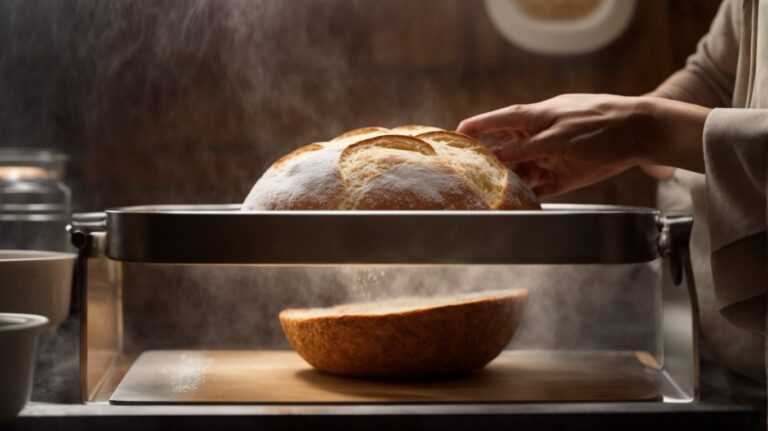How to Cook Omelette?
Looking to up your breakfast game with a delicious and versatile dish?
In this article, we will dive into the world of omelettes with culinary expert Chris Poormet.
From the different types of omelettes to the essential ingredients needed, Chris will guide you through the process of making the perfect omelette.
Grab your eggs, heat up your pan, and get ready to impress your taste buds with a mouthwatering meal. Let’s get cracking!
Key Takeaways:
About the Author: Chris Poormet

Credits: Poormet.Com – Logan Hill
Chris Poormet, the owner of Poormet.com and a celebrated culinary blogger, is a former chef renowned for his expertise in food photography.
His journey from the bustling kitchens of renowned restaurants to the digital realm of culinary creativity is a testament to his passion for all things food-related. Chris’s unique blend of culinary skills and artistic flair has allowed him to carve out a niche for himself in the fiercely competitive world of food photography and blogging.
Through his platform, Poormet.com, he shares his culinary adventures, recipes, and insights with a growing community of food enthusiasts eager to learn from his experience. Chris’s eye for capturing the essence of a dish is truly unparalleled, making his photographs a feast for the eyes and a source of inspiration for aspiring home chefs.
What Is an Omelette?
An omelette is a versatile dish made primarily from eggs and various ingredients, cooked to perfection using specific techniques.
Traditional omelettes can be cooked in a pan over medium heat where eggs are beaten, poured into the pan, and left to set before layering fillings on one half and flipping the other half over to encase the ingredients.
Omelettes are popular for their quick preparation time and the endless possibilities they offer in terms of fillings including cheese, vegetables, meats, and herbs, making them a go-to dish for breakfast or a light meal.
What Are the Different Types of Omelettes?
Omelettes come in various forms, including the classic French Omelette, the hearty American Omelette, the flavorful Spanish Omelette, and the robust Frittata.
Each type of omelette offers a unique culinary experience.
- The French Omelette is known for its smooth and creamy texture, cooked quickly over high heat to create a tender exterior.
- In contrast, the American Omelette is typically larger and stuffed with an array of fillings like cheese, vegetables, and meats, providing a satisfying and hearty meal.
- The Spanish Omelette, or tortilla de patatas, features layers of thinly sliced potatoes and onions bound together with eggs, offering a rich and hearty flavor.
- On the other hand, the Frittata hails from Italy, a thicker omelette cooked slowly in the oven, allowing for a variety of ingredients like cheese, herbs, and meats to meld together harmoniously.
French Omelette
The French Omelette, a culinary delight, is known for its creamy texture, rich flavors, and delicate fold, achieved through the use of high-quality ingredients like butter, Gruyere cheese, and fresh herbs.
This beloved dish showcases a velvety and custard-like interior, complemented by the nutty flavor of Gruyere cheese melting within the folds. The buttery finish adds a decadent touch, enhancing the overall taste. Typically seasoned with fragrant fresh herbs like chives or parsley, the omelette offers a burst of freshness in every bite. The art of folding the omelette ensures a perfect balance of creamy egg interior and slightly crispy exterior, creating a harmonious mouthfeel and taste experience.
American Omelette
The American Omelette stands out for its hearty nature, featuring robust fillings such as sharp Cheddar cheese, savory meats, and a colorful array of fresh vegetables.
What sets this omelette apart is its versatility in terms of fillings, offering a wide range of options to suit every palate. Whether you prefer classic ham or bacon, or opt for a healthier option like spinach and mushrooms, the American omelette can cater to various tastes.
The rich flavors of the Cheddar cheese blend seamlessly with the meats, creating a satisfying and indulgent experience with every bite. The vegetables not only add a pop of color but also contribute a delightful crunch and freshness to the dish.
Spanish Omelette
The Spanish Omelette, also known as ‘Tortilla Española’, features a delightful combination of ingredients including potatoes, onions, and tangy feta cheese, creating a flavorful and satisfying dish.
Traditionally, the Spanish Omelette is made by sautéing thinly sliced potatoes and onions until they are tender and slightly caramelized, adding layers of texture and depth of flavor. The fluffy eggs mixed with the cooked potatoes and onions are then poured into a hot pan, where they form a golden crust on the outside while remaining moist and creamy on the inside, offering a contrast of crispy and soft textures in each bite. The addition of salty feta cheese brings a pleasant tang that balances the sweetness of the onions, elevating the overall taste profile.
Frittata
The Frittata, an Italian-style omelette, showcases a medley of ingredients such as vibrant spinach, ripe tomatoes, and creamy goat cheese, offering a satisfying and wholesome meal option.
Rooted in the culinary traditions of Italy, the Frittata embodies the essence of Mediterranean flavors. The tender spinach adds a burst of freshness, complemented by the juicy sweetness of ripe tomatoes that lend a delightful tanginess to each bite. Layered with creamy goat cheese, the Frittata achieves a perfect balance of textures and tastes. Known for its versatility, this dish can be enjoyed at any time of day, whether breakfast, brunch, or as a light dinner choice. Its reputation for being a crowd-pleaser makes it a go-to option for home cooks looking to prepare a simple yet impressive meal that is both nutritious and flavorful.
What Ingredients Do You Need to Make an Omelette?
To create a delectable omelette, essential ingredients such as eggs, a flavorful filling, and the right cooking technique are paramount.
Regarding making a mouth-watering omelette, the quality of the ingredients plays a crucial role in achieving that perfect balance of flavors and textures.
Eggs serve as the foundation of an omelette, providing the necessary protein and richness. It’s the diverse fillings that elevate the omelette to a whole new level, whether it’s sautéed vegetables, cheese, ham, or herbs. The key is to experiment with different combinations to suit your taste preferences.
Eggs
Eggs form the foundation of any omelette, requiring a well-prepared egg mixture, careful handling with a spatula, and occasional use of water to achieve the desired consistency.
The key to a successful omelette lies in the egg mixture. Whisking the eggs until they are properly blended creates a light and fluffy texture. When cooking, using a spatula to gently push the cooked portions towards the center allows the uncooked egg to flow to the edges, ensuring even cooking. Adding a splash of water to the eggs before mixing can help adjust the omelette’s texture, making it creamier or fluffier depending on preference.
Milk or Cream
The addition of milk or cream to the egg mixture introduces a creamy and luscious texture, enhancing the overall richness and flavor profile of the omelette.
When milk or cream is mixed with the eggs, it helps create a softer and more tender omelette by binding with the proteins. This results in a velvety smooth texture that melts in your mouth with each bite. The milk or cream also adds a touch of sweetness and richness that balances out the savory elements of other ingredients. The moisture from the milk or cream prevents the eggs from becoming too dry, ensuring a perfectly cooked omelette every time.
Salt and Pepper
Seasoning with a pinch of salt and a dash of pepper enhances the omelette’s taste, providing a harmonious balance of flavors that elevate the overall culinary experience.
While salt accentuates the natural flavors of the eggs, pepper adds a subtle kick of heat and complexity to the dish. The key lies in mastering the art of seasoning, as too much or too little can disrupt the delicate equilibrium. A well-seasoned omelette not only pleases the palate but also showcases your culinary skills.
Understanding the role of salt and pepper in omelette preparation is crucial in achieving that perfect balance of savory goodness and aromatic punch. These simple yet powerful ingredients can transform a mundane breakfast dish into a gourmet delight.
Filling Options
The choice of filling, whether indulgent cheeses, savory meats, or fresh vegetables, paired with a sizzling skillet and a dollop of butter, can transform an omelette into a culinary masterpiece.
Regarding incorporating butter into your omelette, it’s essential to use just the right amount to achieve that perfect balance of richness and flavor. A well-seasoned skillet plays a crucial role in ensuring that your omelette cooks evenly and develops that coveted golden exterior.
Experimenting with different fillings not only adds a variety of textures and tastes but also allows you to personalize your omelette to suit your preferences. From classic combinations like ham and cheese to more eclectic options such as spinach and feta, the possibilities are endless.
How to Make a Basic Omelette?
Mastering the art of crafting a basic omelette involves precise cooking techniques, optimal heat management, and a nuanced understanding of flavor combinations.
To begin, crack eggs into a bowl and whisk them until they are well combined. Next, heat a non-stick pan over medium heat and add a knob of butter. Once the butter is melted and bubbling slightly, pour in the whisked eggs. Use a spatula to gently push the cooked edges towards the center, tilting the pan to let the still-liquid part flow to the edges.
When the omelette is mostly set but still slightly runny on top, add your desired fillings such as cheese, herbs, or vegetables.
Beat the Eggs
The initial step in omelette preparation is to beat the eggs thoroughly, ensuring a uniform egg mixture that cooks evenly and yields a fluffy texture.
When beating the eggs, use a whisk or fork to blend the yolks and whites together until you no longer see separate components. This process ensures that the egg mixture is consistent throughout, which is crucial for proper cooking. It’s essential to incorporate air into the eggs as you beat them, leading to a light and airy omelette.
Once you achieve a smooth and frothy consistency, pour the mixture into a preheated pan and cook over medium heat until it sets but remains slightly moist on top.
Heat the Pan
Properly heating the pan to the ideal temperature is crucial for achieving a golden-brown exterior and a tender interior when cooking an omelette.
When the pan is heated just right, it allows the eggs to cook evenly and prevents sticking. The heat activates the proteins in the eggs, resulting in a fluffy texture rather than a rubbery one. The sizzling sound of the omelette hitting the pan indicates that the pan is at the perfect temperature. Controlling the temperature of the pan throughout the cooking process ensures that the omelette is cooked through without burning the exterior.
Add the Eggs
Pouring the beaten egg mixture into the heated pan sets the stage for the omelette’s cooking process, ensuring a gradual transformation into a tender, folded masterpiece.
As the egg mixture makes contact with the hot surface, it starts to solidify from the edges towards the center, creating a delicate balance of textures. The heat works its magic, gently firming up the omelette while keeping it soft and creamy inside. It’s crucial to observe the edges as they begin to set, signaling the right time to gently fold the omelette in half. Use a spatula to carefully lift one side and bring it over the other, creating that classic omelette fold.
Add the Filling
Incorporating the chosen filling onto one side of the omelette while sizzling in buttered skillet infuses rich flavors and textures into the dish, readying it for the final culinary flourish.
The process of adding fillings to your omelette is an art that elevates every bite. Once the omelette starts to set, spread your preferred filling over one half of the omelette – whether it’s cheese, ham, mushrooms, or veggies – allowing the flavors to meld beautifully with the egg. The sizzle of the butter in the skillet ensures a delightful golden crust while imparting a rich, buttery flavor to the omelette.
Fold and Serve
The artful folding of the omelette encases the creamy filling within, showcasing expert techniques that enhance both visual appeal and taste, readying it to be served and savored.
To achieve the perfect fold, the omelette is gently lifted with a spatula and folded in half, ensuring that the creamy interior remains intact. Expert chefs often use a combination of wrist movements and precise timing to create the ideal shape without overcooking the eggs. The final result is not only visually pleasing but also offers a burst of creamy goodness with every bite, making it a delightful experience for the palate.
Tips for Making the Perfect Omelette
Achieving omelette perfection requires mastering various tips and techniques, from precise heat control to expert cooking finesse.
One crucial tip is to ensure that your pan reaches the right temperature before adding the eggs; a hot pan prevents sticking and yields a beautifully cooked omelette.
Incorporating the right amount of air into the eggs before pouring them into the pan can result in a light and fluffy texture.
Practicing the wrist movement for that perfect fold is essential for presentation and flavor distribution.
Remember, mastering these techniques and heat management is the key to a delicious, flawless omelette every time!
What to Serve with Omelette?
Pairing your omelette with complementary accompaniments such as fresh greens, toasted bread, or tangy sauces can elevate the dining experience to a new level of culinary delight.
Imagine serving your fluffy omelette alongside a vibrant mixed salad drizzled with a zesty vinaigrette, creating a refreshing and balanced contrast of flavors.
Alternatively, opt for a side of crispy hash browns for a satisfying crunch that complements the soft texture of the omelette.
For a more indulgent twist, consider pairing your omelette with a dollop of creamy avocado spread or a spoonful of spicy salsa, adding a kick of heat to each bite.
The versatility of omelettes allows for endless accompaniment possibilities, so feel free to experiment and find your perfect combination.
Conclusion
Mastering the art of creating various types of omelettes opens up a world of culinary possibilities, blending flavors, textures, and techniques for a delightful dining experience.
From the fluffy and creamy French-style omelette to the hearty Spanish tortilla packed with potatoes, each recipe offers a unique twist on this classic dish. Experimenting with different fillings like cheese, vegetables, meats, or herbs allows for endless culinary exploration. Whether you prefer a simple and quick cooking method for a busy morning or a more elaborate preparation for a leisurely brunch, the versatility of omelettes makes them a perfect go-to meal for any time of the day.
Frequently Asked Questions
1. How to Cook Omelette?
Cooking a perfect omelette is all about technique and timing. Follow these simple steps to make a delicious omelette every time.
2. What ingredients do I need to make an omelette?
The basic ingredients for an omelette are eggs, milk, butter, and your choice of fillings such as cheese, vegetables, or meat.
3. What type of pan should I use to cook an omelette?
A non-stick pan is recommended for cooking omelettes as it prevents the eggs from sticking and makes flipping easier. However, any pan can be used as long as it is well-greased.
4. How do I achieve a fluffy omelette?
To make a fluffy omelette, beat the eggs and add a splash of milk or water before cooking. This will create air pockets and make the omelette light and airy.
5. Can I make omelettes in advance?
Omelettes are best served fresh, but you can make them in advance and reheat them in the microwave or on a stove. Just make sure to wrap them in foil or plastic wrap to keep them from drying out.
6. Can I use egg whites to make an omelette?
Yes, you can make omelettes with just egg whites for a healthier option. However, the yolks add flavor and richness, so you may want to use at least one whole egg in your omelette.







